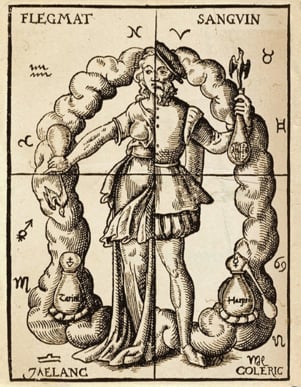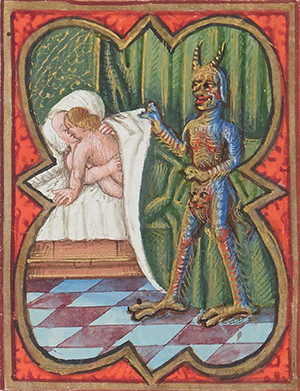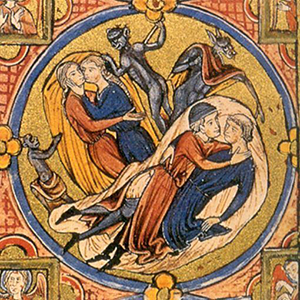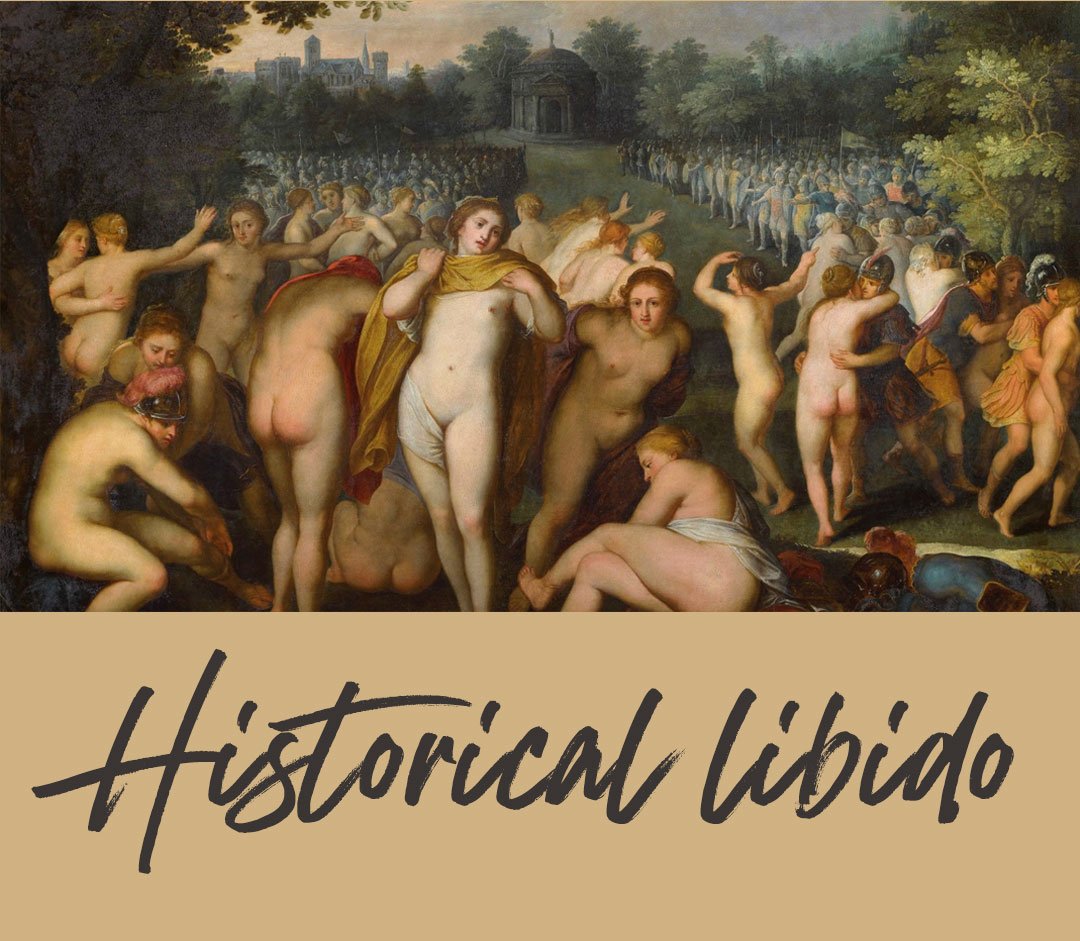When we think about women and sex or women’s sexuality, one of the things that we are told most often and clearly is that women are not very sexual. The reasons we are given for this idea vary widely: women are from Venus and therefore romance is more important to them than sex, so the only reason that most women deign to have sex is to secure love and romance. Therefore, women have no interest in things like casual sex because they can only enjoy sex with a romantic connection. At other times, our society tells us that the reason that women are more interested in love than sex because women simply don’t experience as much pleasure during sex. As a result, we are told that women need to be gamed or tricked into sex.
This conception of women’s sexuality is prevalent enough that low-libido in women has a dedicated NHS page. Even well-meaning groups such as OMG Yes!, while doing laudable work to highlight pleasure for women during sex, still tacitly agree that people have to go out of their way and apply a “scientific” approach to sex in order for women to get off.
There have been plenty of evo-psychological takes to explain this state of affairs. It’s been said that women are less interested in sex than men are because if they aren’t in a fertile period of their cycle, or if they are pregnant, or if they have stopped menstruating they don’t have a reason to be interested in sex. Men, in contrast, remain fertile until death and are therefore still interested in sex.
Similarly, women are supposedly not interested in casual sex or having multiple partners because they are theoretically only interested in securing a mate who will provide for them and their child. Again, we are told that men differ here because they can impregnate as many women as they would like, in theory, and so their sex drive remains high.
The trouble with all of these theories and rationalisations is that there is no historical basis for the idea that women aren’t interested in sex. In fact, as far as medieval people were concerned, the opposite of everything you’ve just read is true. Women, according to most thinkers of both the ancient and medieval period were extremely and inexhaustibly horny.
Early medical conceptions of women
In order to figure out why people in the past came to consider women as the overtly sexual gender, it is helpful to have a look at how they understood women from a medical standpoint. The medieval idea of womanhood was by and large one that mixed together Aristotelian, Galenic, and biblical ideas of women.
For the great ancient Greek philosopher Aristotle, women were, more or less, inverted versions of men. Men were the human template or default, and women with their internal genitals were, therefore, a sort of inside-out guys, and inherently vastly inferior to men as a result. These ideas were then mixed in with the ideas of Galen, yet another Ancient Greek, whose medical ideas were the basis for the European understandings of the body until the seventeenth century.
Galen, like Aristotle, was a noted misogynist. He wrote that man (and specifically man) was “the most perfect of all animals” and that “within the human species, man is more perfect than woman.” Partially this was because he agreed with his predecessor Aristotle that women were inside out men. Galen elaborated on the nature of physical bodies from where Aristotle left off. For him, everything could be sorted into various categories based on the four humours: blood, phlegm, black bile, and yellow bile. These four humours existed in each human body in various combinations and they all had their own corresponding characteristics: either hot or cold, and wet or dry. Men were hotter and drier, and women were wetter and colder. Men were therefore superior to women because of their innate “superabundance of warmth, heat being the primary instrument of nature”.

Medieval Europeans based much of their worldview on these ancient texts and wholeheartedly accepted the idea that women were cold, wet, inside-out guys. However, they also added in their own Christian beliefs as well, looking to Genesis for more clears on the duality of humanity. Adam, so the Christian mythology goes, was created by God whole, and was, therefore, the closest to perfect that God could arrange. Eve, in contrast, was created as an afterthought, a specific gift from God to Adam to keep him company. Unlike Adam who was formed from clay, Eve was made from one of Adam’s ribs. Eve then, was inferior to Adam, having originated from his body.
Women and their bodies were already inferior in this conception, but they had even more scorn coming courtesy of the idea of the fall of man and original sin. Eve’s decision to eat the fruit of the tree of life in the Garden of Eden meant that all humans were cursed with knowledge and would one day die. Not satisfied with this, God felt that when Adam and Eve were exiled from the garden, he would also give Eve some extra punishment and ordered that she be afflicted with pain in childbirth.
For medieval Christian European’s women’s bodies were, therefore, inherently deviant and cursed.
Irrational Women
It wasn’t just women’s bodies that were the inverse of men’s, however, but their minds and temperaments as well. Men, once again according to Aristotle, were rational and stoic. Women, in contrast, were irrational and prone to quarrels. They were overly emotional—too compassionate, too opinionated, too willing to communicate. They were also devoid of shame, whereas men had learned to tame their baser instincts because of their superior intellects.
The Christian view agreed with this. Of course, Aristotle was correct! Women couldn’t even follow direct orders from God and could get tricked into eating forbidden fruit by snakes. Clearly, then, they were irrational, emotional, and impulsive creatures. This theoretical irrationality was encoded into women biologically both because of the humours that ruled their bodies, but also as a direct result of God’s curse on them. It was impossible to separate the two things from each other.
The biological predilection of women to irrationality is why, for medieval people and ancient people alike, women were the ones who were absolutely obsessed with and consumed by sex.
Romans considered that male virility and interest in sex was linked specifically to semen. As a result, men could theoretically expend all of their sexual desire simply by ejaculating. This had two effects: on the one hand men could rid themselves of lustful thoughts by having sex and moving on. On the other, it also meant that men could completely exhaust themselves with sex if they weren’t careful.
Sexually active men were thus advised to have sex as little as possible and if they were going to do so to make it count and ensure that they were attempting to get a woman pregnant. Healthy heirs were necessary for society to continue, after all. But so were men with the energy to participate in that same society. Luckily men were, of course, rational enough to restrain themselves and ensure that they only had sex when they were likely to create a proper Roman heir who would continue their legacy.
But what if men didn’t do this? What if they succumbed to temptation and had more sex? Well, they were in danger of becoming women. Semen was the thing that made men, well, men. It was where strength, power, and authority originated from, and what gave men the ability to participate in society and public life. If they ejaculated too much, they would deplete their stores of hot dry energy and become just like women.
In fact, excessive lust in and of itself was a feminine quality, so if you were already at the point that you were willing to ejaculate willy-nilly, you were already on your way to being like a woman. Women, unlike men, couldn’t use rationality to control their sexual desire and as a result, were constantly up for it. Why else would they be so interested in having sex even when they menstruated? An interest in sex for something other than procreation was unseemly, illogical and proof that women must be kept from positions of authority.
Women couldn’t be blamed for their lustful nature, as silly as they may be, though. Because they were cold and wet they naturally desired the hot dry essence of men. They had an innate desire for the semen of men to warm them up and dry them out. And as they had no part to play in civic life why should they be concerned with whether an excess amount of sex would debilitate them? What did they have to think about? They were simply there to provide heirs for men, they could be as sexual and silly as they liked, provided they didn’t interfere with men.
The medieval Christian view of sex, men and women, applied these ancient ideas and slapped a layer of religious guilt on top for good measure. Sex was now a dangerous thing, not simply because it might interfere with men’s ability to rule themselves and the world. No, now it was a part of the sinful nature of humanity. If Adam and Eve had never sinned, they would never have been cursed to die and wouldn’t need to have children. Sex was, therefore, a part of God’s punishment for humans generally, and could be sinful if engaged in for any reason beyond procreation.
The medieval philosopher Thomas Aquinas thus expressed—much as the Romans did—that any interest in sex beyond procreative was irrational. Married men and women could occasionally engage in sex if they were specifically trying to get pregnant, but they had to be careful to make sure it was as dull as possible. They had to keep in mind that “kisses and touches … [as] … they proceed from lust … are mortally sinful” and keep those to the minimum amount possible.
Women, famously, were very bad at living according to these rules. They were interested in sex even when they were menstruating, or breastfeeding, proving that they couldn’t be rational about sex. What is more, they were very interested in specifically the kinds of sex that Thomas Aquinas warned about—all that extra touching and kissing! Any good Christian would know they had to get in and out as quickly as possible when having sex. But women wanted all sorts of things other than the fastest possible penis in vagina. It was irrational! It was sinful! It was shocking!
The sinful, simple nature of women was, therefore, codified into their very bodies. Just as they couldn’t help eating the fruit of knowledge, they also couldn’t resist the forbidden fruit of recreational sex.
Just as the Romans warned that women might absorb men’s heat through sex, for medieval people there were some presumed biological reasons that women would be this interested in sex. As they were cold and wet, the experience of sex with a man might heat them up and help them to absorb some of the beneficial parts of maleness. A late medieval medical manual, The Secrets of Women, claimed that “The more women have sexual intercourse, the stronger they become because they are made hot by the motion that the man makes during coitus. … male sperm is hot … and when it is received by the woman it warms her entire body, so women are strengthened by heat.”
Women and Pleasure
That women would want to be warmed up by sex was a given. Heat was, after all, the most perfect natural state. As a part of this desire for and delight in heat, it was also accepted that women simply enjoyed sex more than men did and they felt more pleasure during sex as a result.
For the ancients, this idea was explicated as a part of the Greek myth of Tiresias. Tiresias was a blind prophet of Apollo who was transformed for several years into a woman. During this time he had the chance to experience sex as a woman, famously stating afterwards that “If the parts of love pleasure be counted as ten/Thrice three go to women, one only to men”.

And that certainly seemed to be true. Many ancient and medieval people alive happened to notice that women were able to orgasm repeatedly during sex, whereas most men were restrained and their orgasm was often linked specifically to ejaculation. Women, in contrast, could just keep on having sex and enjoying themselves.
The idea that women were experiencing more pleasure during sex gave way to the popular idea that women were also interested in taking on multiple lovers in order to have sex. The fourteenth-century bestseller The Decameron by Giovanni Boccaccio summed up the idea this way “whereas a single cock is quite sufficient for ten hens, ten men are hard put to satisfy one woman”.
That this statement appears in a book is no surprise, as the idea of the promiscuous woman was so widespread that to call it a “common theme” would be doing it a disservice. It was really more of a plot point. In particular, medieval people delighted in stories where various young wives, bored with their sex life at home and their (generally older and lacklustre husbands) sought sex outside of marriage.
One of the Decameron’s heroines, Ghismonda decried any hand wringing that her audience may have had about her sexual appetite, stating “I am made of flesh and blood like yourself. Moreover, I am still a young woman. And for both of these reasons, I am full of amorous longings, intensified beyond belief by my marriage, which enabled me to discover the marvellous joy that comes from their fulfilment.”
Medieval literary heroines blithely spent their time shagging lovers up in pear trees while their blind husbands sat below, unaware, as in the case of “The Merchant’s Tale” in Geoffrey Chaucer’s fourteenth-century Canterbury Tales; or in boats after convincing their husbands that a flood was imminent in “The Miller’s Tale”. Meanwhile in “The Reeve’s Tale” a Miller’s wife and his young unmarried daughter sleep with a pair of young clerks who have come to the mill to do business.
One French fabliaux, a popular genre from the twelfth and thirteenth centuries, told audiences of a canny wife who was attempting to cheat on her husband with a young student. When the husband attempted to disguise himself as the student and unmask her as a cheater, she exacted revenge by telling his family that her disguised husband was pestering her for sex. His family mistakenly beat the man and threw him on a dung heap, while his wife celebrated with an all-nighter with her student undisturbed.
One way or another, if you pick up a piece of popular medieval literature you are almost certain to find a horny housewife looking to be satisfied. The difference between medieval and current concepts of said housewife is that you find her throughout medieval literature, not just in porn or erotica.
Implicit in all of the tropes about women lusting after men is the idea that they are also devious. Just as Aristotle lamented centuries before, it was assumed that women were crafty and prone to lying to get what they wanted. Of course, because they were also prone to temptation just like Eve, they were more likely to act out in order to get the sex they craved.
These ideas coalesced in a dangerous way in the early modern period when witch-hunting became more common. A famous witch-hunting manual the Malleus Malificorum or Hammer of the Witches written by two Dominican friars sometime in the late fifteenth century used the supposed innate sexuality of women to explain why it was that women were more likely to be witches than were men.
According to them women were witches because… “women are naturally more impressionable … they are feebler in both mind and body … [and a woman] is more carnal than a man, as is clear from her many carnal abominations … All witchcraft comes from carnal lust, which in women is insatiable … these women satisfy their filthy lusts … causing by all sorts of witchcraft the death of their souls through the excessive infatuation of carnal love.”
Women’s sexuality for these men was not just an amusing anecdote, but an actual malevolent force that could bring demons into the world. Women being horny was not just a harmless plot point over ales down the pub, then. The idea that women couldn’t control their own sexuality led to the avoidable deaths of many women during the witch persecutions of the early modern period.
Obviously then, our concepts of women as frigid non-sexual beings who need scientific answers to an innate and distressing disinterest in sex is, well, new. From the ancient period right through to the rise of witch trials in the modern period, it was women who could lay claim to being the more sexual gender.

What we do have in common with our medieval and ancient counterparts is that we assume that women want the opposite of whatever it is that our society values. In the ancient and medieval periods, when people were expected to keep their minds free of sexual thoughts in order to be upstanding members of the community or devoted Christians, men were pure and innocent. It was women, the dark inversions of virtuous men, who were obsessed with sex. After all, they couldn’t help it! It was encoded into their very nature!
Now, when we have begun to embrace sexuality as a positive thing, the opposite is suddenly true. Men, being the take-charge go-getters that they are can see the value in lots of recreational sexy sex. Women, in contrast, are just “naturally” not interested in sex because of their low testosterone, or their need for a serious relationship.
When we look at the history surrounding women and sexuality it becomes clear very quickly that there is no one-size-fits-all way to talk about gender and how much they might enjoy sex. It varies from person to person, and from day to day. When we attempt to make sweeping generalisations about women, as a society we generally end up blaming an entire gender for all the sexual problems of the world.
The good news is that if concepts of women’s sexuality have changed so much from the early modern period, that means that we can change them again now. Let’s get to a point where everyone’s sexuality is individual and I can almost guarantee us all better sex.
Medieval Sex – What was sex like in the Middle Ages



